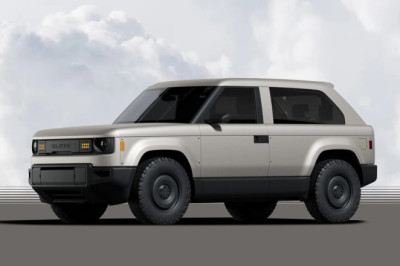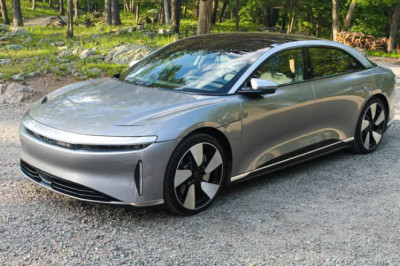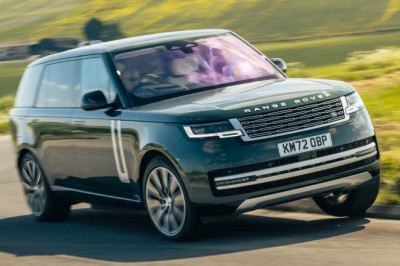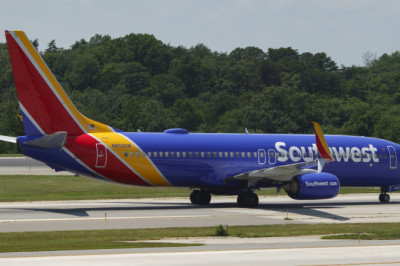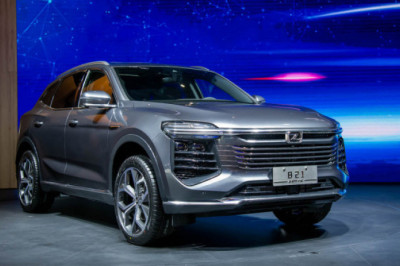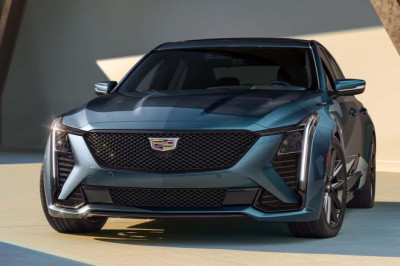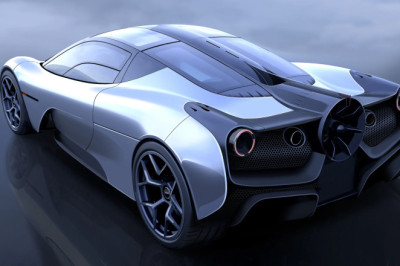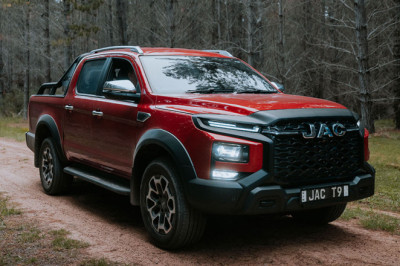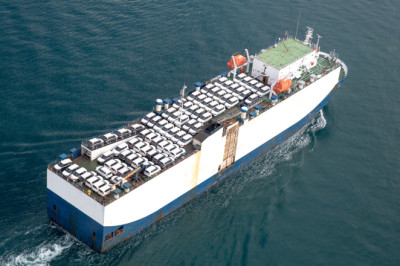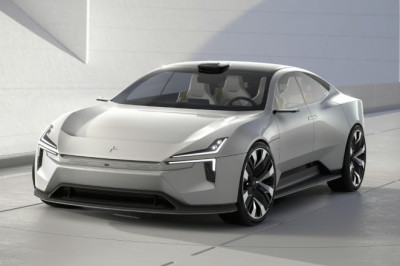
Central London was suspended in a frigid November gloom when the brass armada rolled in for the London to Brighton Veteran Car Run. As my wife and I toted our roller bags through the predawn darkness, a torchlight procession of flickering acetylene headlights passed us, clattering and hiccuping and wheezing its way down the city’s deserted avenues to converge on Hyde Park. Where, around 7 a.m., some 400 of these auto-buggies, runabouts, broughams, bench-seated stanhopes, cycle-wheeled voiturettes, and big touring phaetons began to file out again. They passed underneath the Wellington Arch, in front of the gates to Buckingham Palace, and over Westminster Bridge below the towering Gothic filigree of Big Ben, as they’ve done every year almost continuously since 1927. The cars, none newer than 1905, then turned south toward the coastal resort town of Brighton, some 54 miles distant at the end of a hilly and at times traffic-choked route. The quickest finished in under four hours; most take much longer, while some struggled to arrive by the 4:30 p.m. deadline and others never even made it out of London.
We were invited by Les and Dee Searle, the coast-to-coast Lagonda couple we featured in November, to ride along in their 1903 Renault 10-hp Wagonette. It’s a shovel-faced, wooden-wheeled, two-cylinder pickup (of sorts) that cruises on a flat road at a heady 21 mph. With stops for fuel, tea, sausage baps, and aid and advice to misfortunates with problems, it took us more than seven hours in a frigid breeze under the pall of a leaden sky to reach our destination. And it’s some of the best seven hours I’ve ever spent in a car. We saw London and a bit of pastoral England perched 5 feet in the air with no roof or glass between us and the view. We met rabid enthusiasts of all ages and got sore wrists returning the waves from the crowds lining the route, many of whom arrived in their own leaky and squeaky antiques. And we became immersed in what had been an unknown corner of our car world, discovering why people still love these ancient, glacially slow machines from the automobile’s infancy.
Conventional wisdom maintains that classic cars hold their value largely because of nostalgia. People want the cars that were cool when they were young. Certainly, that is true for a lot of owners, but it doesn’t explain why the values of the earliest cars have remained consistently strong. Nobody alive today remembers when a Pope-Hartford or a Simplex was the sexy new thing (Pope-Hartford went under in 1914, Simplex in 1918), yet various models of each routinely trade for hundreds of thousands. Pristine examples of the Stutz Bearcat like the one we drove here sell for more than $1 million. And though it has been true for years that decent Ford Model Ts sell for $15,000 to $20,000, prices that are unlikely to skyrocket soon, that much money is not nothing. Especially considering the T has all of 20 horsepower, it maxes out around 45 mph, and there are still plenty to choose from out of the 15 million that were made.
People want these cars, and if it’s not nostalgia, then what keeps these old and slow machines in demand? I asked a few participants while we regained the feeling in our fingers and toes in a tent at the Brighton finish line. “If I had to get rid of all my cars except one, this is the one I would keep,” proclaimed Tim Wiggins at the Brighton finish line. Wiggins, of Aurora, Illinois, was pointing to his 1904 Ford Model A, the 1614th car produced by a company that went on to build 300 million more. “You’re sitting up high. There’s no windshield, no seatbelts. It’s just so much fun to drive.”
There are no black boxes to fritz, no relays to stick, no plastic to crack.
Sipping his complimentary hot toddy nearby was Richard Plavetich of Laguna Beach, California, who worked as a car designer in Detroit and once ran Nissan’s U.S. design studio. He had just crossed the line with his wife atop a 1901 De Dion-Bouton, an early French car with all of 4.5 horsepower. It was Plavetich’s fifth time doing the Brighton run, he said, and the car’s 75th time. As you’d expect from someone who has worked in the industry, Plavetich has owned a number of blue-chip classics, including 1950s and ’60s European sports cars, but “it was getting too easy—we needed a new challenge.” One day he was watching an episode of Chasing Classic Cars in which prehistoric jalopies splashed through a pelting November rain in England, and he thought, “I want to do that.”
As with many of the cars in these events, the De Dion’s wacky controls date to a time before the establishment of industry conventions. There’s no steering wheel, for example, just a post sticking out of the floor with a single-grip handle. There’s no accelerator pedal. Instead, the rear-mounted single-cylinder engine runs flat-out until you move a “decelerator” lever on the column that lifts the exhaust valve to release the compression. The route’s many hills are a challenge both to the ancient powerplants and the notional brakes of the era. “Sometimes you’re down to 4 to 5 mph and it’s, ‘I think I can, I think I can,’” said Plavetich. “When you finally get here, you’re really proud of finishing.”
Bud Lederer, another American in the event, brought a 1904 White steam car that huffed its way into Brighton right behind us. The attractions to these early cars are many, he said, including the fact that “cars like this just make people smile.” Also, he told me, the unpredictability of a cross-country drive in a car that was built in the time of our great-grandfathers, when there were but 45 stars on the American flag and less than 2000 miles of paved road, means every outing is an adventure. “It’s a whole different world from a modern car.”
***
A month later, under much sunnier skies, the Horseless Carriage Club of America’s Southern California chapter hosted its 68th annual Holiday Motor Excursion for pre-1933 cars. The mileage, number of cars, and attending hubbub were all a bit less for this local event, the route meandering for several hours through the old bungalow-lined neighborhoods in and around the LA suburb of Pasadena. But the enthusiasm of the participants was about the same. Echoing the sentiment of the White owner in England, Joe Diener of Pasadena said of his 1913 Overland: “These bring a smile to people’s faces that you don’t necessarily get with a ’60s Mustang, even though they’re both equally cool.”
The crowd at many car events can be self-selecting, the roar of engines and the waft of gasoline and burned rubber tending to appeal only to the true believers. However, as with London to Brighton, the Holiday Motor Excursion was a family affair, with the big touring cars as well as the lighter runabouts loaded to the gunwales with kinfolk of all ages. Some of the cars on the Excursion sported radiator wreaths and tinsel for the holiday season, and a few people styled it up in period clothing. Homeowners along the route seemed to have no problem prying their kids away from their screens to watch these old buggies rattle past. If you’re looking for a car activity that you can do as a family, early automobiles might be your answer.
“With everything so fast nowadays, you get to slow down and just cruise,” said Austin Janisch of nearby Santa Ana, who at 27 was one of the younger drivers at the Excursion. A couple of years ago, he inherited a bone-stock 1931 Ford Model A coupe that his great-grandfather bought new. “When he gave it to me, my grandfather said I could never sell it and that I had to learn how to fix it. It’s given me a whole education on how an engine works that has also helped me keep my ’95 Toyota 4Runner working.”
The simplicity of early cars is another attraction, people told me. Everything is mechanical and made of heavy, overbuilt, cast… something. There are no black boxes to fritz, no relays to stick, no plastic to crack, and, in cars with magnetos, no points to burn or coils to overheat. Many early cars have no fuel pumps, just an air pump to pressurize the fuel tank. A Ford Model T has no oil pump or water pump, relying on simple splash lubrication and a natural physical process called thermosiphoning to keep water circulating. The British made cars into the 1930s without water pumps.
Big-bore cylinders that are understressed with low compression ratios and slow piston speeds mean an early engine will often keep running as long as it gets some reasonable amount of fuel and air and a spark at some reasonably opportune moment. Anyone who has tried to tune a finicky off-idle stumble out of a Weber carburetor, or scarred a knuckle trying to pull the back spark plugs of a V-8, or wrestled with the advance curves on a mechanical distributor, can appreciate engines that are fully accessible through removable side panels, have manual controls for many functions, and aren’t as sensitive to perfect timing or air-fuel ratios. If they sound like they are running right, they are usually running right, and what breaks can often be fixed on the side of the road with simple tools.
“Part of the fun of Veteran and vintage car ownership is taking the car out with the family and knowing that you can probably get it home,” summed up Peter Card, a U.K. journalist and longtime London to Brighton veteran. “You just have to love early engineering for that.”
This story first appeared in the July/August 2025 issue of Hagerty Drivers Club magazine. Join the club to receive our award-winning magazine and enjoy insider access to automotive events, discounts, roadside assistance, and more.





